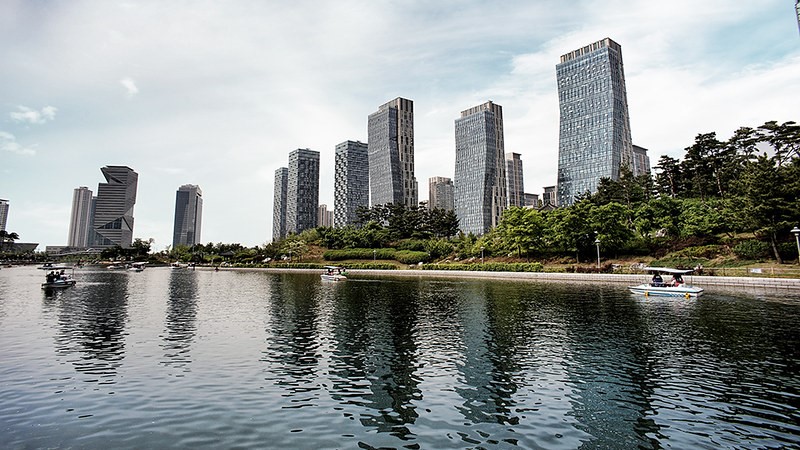After a series of “long and at times difficult” meetings, government negotiators on the Green Climate Fund’s (GCF) board approved a new strategy yesterday morning.
As the American co-chair of the board Victoria Gunderson banged her gavel down yesterday, the boardroom in South Korea applauded and whooped. Behind Gunderson, two advisers to the Pakistani co-chair Naumann Bhatti high-fived.
Board members described the process as characterised by “sleepless nights and hunger pains”, as the board’s twelve developing country and twelve developed country members took a year to negotiate the GCF’s plan for 2024 to 2027.
‘Historic milestone’: Ecuador nears vote to keep Amazon oil in the ground
Developed country governments pushed for the fund to attract more private finance, rather than money from their taxpayers, and for the most vulnerable countries and communities to be prioritised.
Developing country governments called for wealthy governments to provide more public money, while China pushed back against distinctions between more and less vulnerable developing countries.
The Green Climate Fund was set up in 2010 to distribute money from wealthy countries to climate projects in low and middle-income countries. It has spent around $12bn so far.
Need more money
The GCF gets most of its funding from replenishment rounds when developed governments pledge to give it money for the next period.
These happen every four years and the latest one is happening now, ahead of a pledging conference in the German city of Bonn in October.
African negotiators raised concerns that the GCF is planning based on an assumption that there will not be a major increase in its funding, despite the worsening climate crisis across the world.
Pacific “mixed feelings” after compromise on shipping’s climate goals
The strategy assumes the GCF will be able to give out about $2-3 billion a year, compared to around $2 billion in the previous three years.
This would be somewhere between what the GCF describes as a “status quo” and “middling” scenario.
A “high scenario” would involve about $3.75 billion a year, according to internal GCF documents seen by Climate Home.
Egypt’s board member Wael Abdoulmagd told the board meeting: “If we are going to successfully contend with the climate crisis, it is imperative that the GCF be in the position to keep up with the times”.
He added that the amount of help the GCF is planning to give out is “stagnant” and said that “raises a lot of concern”.
South Africa’s Tlou Emmanuel Ramaru said that the GCF needs to raise ambition and that, in this “decade of implementation”, this “has to be really demonstrated…by the increase of the programming target”.
Private sector
But Sweden’s Leif Holmberg said that “the finance that is flowing in from the donors will not be enough to combat climate change”.
Because of this, he told the board that the GCF should “play a catalytical role” in mobilising “both public and private capital”.
Developed countries wanted a greater focus on private capital, which they called “greening of the financial system” in the strategy.
The UK’s retreat from climate leadership is not in its national interest
It appeared as one of five key objectives in an early draft but was dropped from the final version.
Switzerland’s Stefan Denzler said this had been “one of the sacrifices made on the altar of compromise”.
Last year, wealthy governments pressured the GCF to seek more funds from rich individuals and big businesses, taking the burden away from governments.
Who pays in and out?
Developed governments have pushed too for bigger and wealthier developing country governments to join them in funding the GCF.
On a recent visit to China, US finance minister Janet Yellen said: “I believe that if China were to support existing multilateral climate institutions like the Green Climate Fund and the Climate Investment Funds alongside us and other donor governments, we could have a greater impact than we do today.”
The GCF’s governing instrument says that all developing countries are eligible for funds, although money to adapt to climate change should be prioritised for countries “that are particularly vulnerable to the adverse effects of climate change, including [least developed countries], [small island developing states] and African States”.
Green Climate Fund backs scheme financing farming corporations accused of destroying forests
Although there was not a serious push to change this, developed countries pushed for prioritising funds. The UK’s Sarah Metcalf said more funds should go to “fragile and conflict-affected states who struggle to access funds despite being on the frontline of the climate crisis” and called for a “targeted approach” on adaptation.
Switzerland’s Stefan Denzler thanked South Korea for hosting the board meeting, adding: “I’m amazed again by not only the friendly people, professional people in this country but also the level of development achieved – sophisticated facilities, hospitality, the general level of development in a country which according to the UNFCCC [the UN’s climate body] is a developing country”.
The UNFCCC’s list of developed and developing countries was drawn up in 1992 and South Korea’s average wealth has tripled since then.
But China’s representative Yingzhi Liu argued back that “all developing countries are eligible to access GCF resources. This is clearly stipulated in the GCF governing agreement and developing countries should not be differentiated”.
